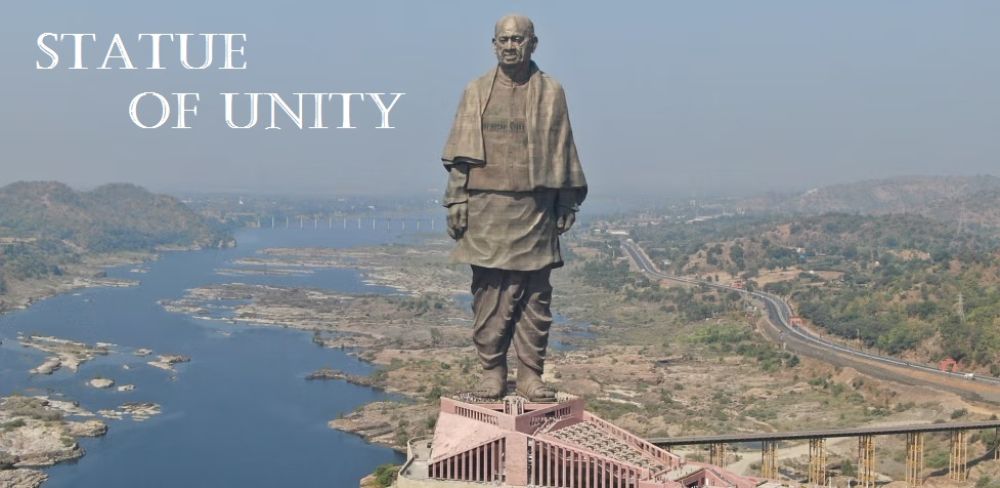The Statue of Unity, standing as the world’s tallest statue at 182 meters (597 feet), is a magnificent tribute to Sardar Vallabhbhai Patel, India’s first Deputy Prime Minister and a pivotal figure in the country’s independence movement. Located in Kevadia, Gujarat, this colossal statue offers more than just a visual spectacle; it provides a deep dive into India‘s history and heritage. To fully appreciate this iconic landmark, it’s essential to choose the best time for your visit. Here’s a comprehensive guide to help you plan your trip.
Seasonal Considerations
Winter (October to February):
- Advantages: Winter is the most recommended time to visit the Statue of Unity. The temperatures range from 12°C to 29°C (54°F to 84°F), providing comfortable weather for outdoor activities. The skies are usually clear, ensuring great visibility for photography.
- Activities: During winter, you can enjoy all the attractions without the discomfort of heat. This includes the Valley of Flowers, the Sardar Patel Zoological Park, and the various viewing galleries.
- Crowd Level: Moderate. While this is a peak tourist season, the area is well-managed, and the crowd levels are tolerable.
Summer (March to June):
- Advantages: Early mornings and late evenings during summer can still be pleasant.
- Disadvantages: The temperatures can reach up to 45°C (113°F), making midday visits quite uncomfortable.
- Activities: If visiting in summer, plan your tour for early morning or late evening to avoid the heat. The statue opens at 8 AM, which is an ideal time to start your visit.
- Crowd Level: Low to moderate. The heat deters many visitors, so the attractions are less crowded.
Monsoon (July to September):
- Advantages: The monsoon season transforms the surrounding landscape into a lush green paradise. The sight of the statue amidst the verdant hills and flowing rivers is mesmerizing.
- Disadvantages: Rain can be unpredictable and heavy, which might disrupt outdoor plans.
- Activities: This season is perfect for nature lovers who don’t mind occasional rain. The Sardar Sarovar Dam, in particular, is a sight to behold when it’s full.
- Crowd Level: Low. The monsoon season sees fewer tourists, so you can enjoy the attractions with less crowd.
Best Time of Day
Early Morning:
- Advantages: The temperature is cooler, and the crowd is thinner. The morning light is perfect for capturing stunning photos.
- Activities: Start with the statue and then explore the surrounding attractions like the Valley of Flowers and the zoo.
- Recommendation: Arrive by 8 AM when the statue opens to maximize your time and beat the crowds.
Late Afternoon to Evening:
- Advantages: The weather starts to cool down, and the sunset provides a beautiful backdrop for the statue.
- Activities: Plan to stay until evening to witness the light and sound show, which narrates the story of Sardar Patel and the making of the statue.
- Recommendation: Visit the statue around 4 PM and then enjoy the evening show.
Special Events and Festivals
Sardar Patel Jayanti (31st October):
- Advantages: This day marks the birth anniversary of Sardar Patel, and the celebrations are grand.
- Activities: Special events, cultural programs, and decorations make the visit even more special.
- Crowd Level: High. Expect large crowds, but the experience is worth it.
National Holidays:
- Advantages: Republic Day (26th January) and Independence Day (15th August) see patriotic celebrations and special events.
- Activities: Enjoy the decorations and programs that highlight India’s national pride.
- Crowd Level: High. These days attract large crowds, so plan accordingly.

Nearby Attractions
Valley of Flowers: A beautifully landscaped area with a variety of flowers that bloom in different seasons, providing a colorful and fragrant experience.
Sardar Patel Zoological Park: Home to a variety of animals and birds, this park is a delight for nature and wildlife enthusiasts.
Sardar Sarovar Dam: One of the largest dams in India, offering spectacular views, especially during the monsoon when the water levels are high.
Shoolpaneshwar Wildlife Sanctuary: Located nearby, this sanctuary offers trekking and nature trails for adventure seekers.
Conclusion
The Statue of Unity is not just a monument but a celebration of India’s unity and history. To fully enjoy your visit, plan your trip during the winter months or early mornings/late evenings in summer. Whether you’re drawn by the historical significance, the architectural grandeur, or the natural beauty of the surroundings, visiting at the optimal time will ensure a memorable and enriching experience.
With thoughtful planning, your visit to the Statue of Unity can be an unforgettable journey through India’s past and present, framed by the stunning landscapes of Gujarat.









